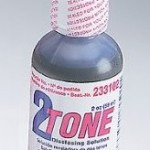What is dental plaque?
Dental plaque is a biofilm (consists of bacteria, saliva )Â which is found on tooth surface. It is normally pale yellow in color and initially can be scraped/removed by tooth brushing and flossing.
Is there any method available to identify dental plaque?
Dental plaque can be identified by chewing plaque disclosing tablet. Plaque disclosing tablet is available over the counter or through dental clinics. It contains plaque staining dye which allows patients to identify areas which are missed out during brushing.
plaque disclosing solution (picture)
Instructions on plaque disclosing tablet:
- Brush and floss your teeth like normal.
- Take a tablet and chew.
- Allow tablet to mix with your saliva.
- Swish around your mouth for 30 seconds.
- Do not swallow and spit out excess mixture.
- Areas with plaque will be stained with red/purple.
- You can brush and floss to remove stained plaque. They resemble areas which are normally missed out during brushing.
What is the composition of dental plaque?
Dental plaque consists mainly of microorganisms such as bacteria, yeasts, viruses. Other than that, dental plaque is also composed of organic and inorganic materials derived from saliva and bacteria products.
How does dental plaque form on tooth surface?
- Formation of pellicle
Dental pellicle, a thin layer of salivary protein is formed on tooth surface within seconds
Initially this layer is free from bacteria.
2. Colonization of pellicle by bacteria
After few minutes, bacteria such as Streptococcus and Actinomyces will colonize this layer.
Later on, it will be colonized by other types of microorganisms and grow into a mature plaque.
Other than tooth surface, where else does plaque adhere to?
Plaque can also be found on restorations, dentures and orthodontic brackets.
Â
What will happen if you do not remove dental plaque?
Dental plaque can cause dental caries
Bacteria (found in dental plaque) will convert carbohydrate/ starch to acid which will demineralise our tooth structure. This process is called demineralization. Remineralisation (minerals return to tooth structure) can take place with the help of saliva and fluoride therapy. Dental caries and formation of cavities will occur when rate of demineralization exceeds the rate of remineralisation.
Dental plaque can cause gum disease.
By deriving minerals from saliva and gum fluids, plaque can get mineralize and forms calculus.
Calculus is normally found on lower anteriors and is stony crust in texture. It contributes to formation of periodontal/gum disease.
What can we do to prevent dental plaque buildup?
You can prevent dental plaque buildup by:
- By proper tooth brushing.
You can identify areas which are normally missed out during brushing by using plaque disclosing tablet/solution.
Change your tooth brush if the bristles are worn out.
Please do not hesitate to consult your dental surgeon for correct tooth brushing method.
2. For effective cleaning between your teeth, you can use dental floss to remove dental plaque and food debris which are stuck in between your teeth
3.Use cleaning aids such as interdental brush, superfloss to clean areas which is hard to reach by using toothbrush.
4.Certain mouthwash has anti plaque ability.
5.Reduce intake of sugar and starchy food.
6.Regular dental visits for scaling appointment to remove plaque and calculus.
